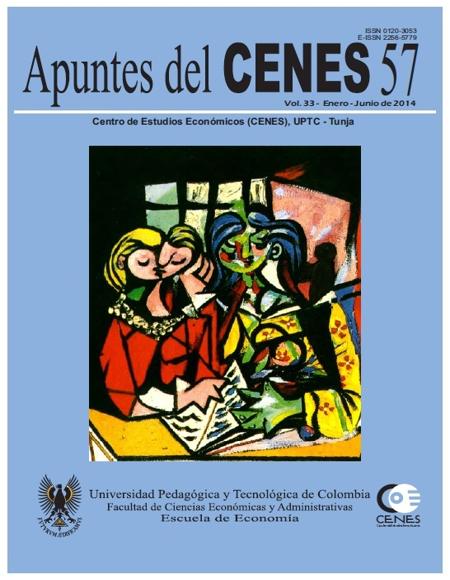Working days series in Colombia: an application to industrial growth adjustment

Abstract
While many economists are aware of the effect of workdays on production measures, it is common to find data being analyzed without adjustment. Generally, the number of workdays in a month changes from one year to the next. This is true for all months, not only for March and April which exhibit the largest variations due to the Holy Week. This paper constructs a series of workdays, accounting for changes in holidays through time, and uses it to adjust industrial production data from DANE. Some months the difference between industrial growth reported by DANE and growth adjusted by workdays may reach 12 percentage points, positive or negative.
Keywords
industrial production, monthly manufacturing survey, working days, seasonality.
References
- Banco de la República. (2005, junio). Informe sobre la Inflación. Bogotá: Banrep.
- Colombia, Congreso de la República. (1983, 22 de dic.). Ley 51 o LeyEmiliani. Por la cual se traslada el descanso remunerado de algunos días festivos. En Diario Oficial No. 36.428, (1983, 30 de dic.).
- Cuando en el Mundo. (2008-2014). Calendario. Recuperado de http://www.cuandoenelmundo.com/calendario/
- Eurostat. (2006).Methodology of Short-termBusiness Statistics. Interpretation andGuidelines.
- Luxemburgo: Office for Official Publications of the European Communities.
- FederalReserve. (2003, abril). Industrial Production and Capacity Utilization:The 2002 Historical and Annual Revision. Federal Reserve Bulletin, 89.
- Landiray, D. (2006, mayo). Calendar Effect and SeasonalAdjustment, EurostatWorkshop (10- 12). INSEE.
- Martínez, C. (2004). Pronósticos de la producción industrial. Documento 273.Archivos de Macroeconomía. Bogotá: Departamento Nacional de Planeación, Dirección de Estudios Económicos.
- Montenegro,A. (2010). Cifras de producción industrial ajustadas por días hábiles.Documento de trabajo. Departamento de Economía, Universidad Javeriana. Universitas Económica,(1).
- Montenegro,A. (2011).Análisis de series de tiempo, Bogotá: EditorialUniversidad Javeriana.
- StatisticsCanada. (2014, 31 demarzo).Gross Domestic Product byIndustry, NationalMonthly. Data Release. Retrieved from ht tp: / /www23.statcan.gc.ca/ imdb/p2SV.pl Function=getSurvey&SDDS=1301
- Soukup, R. & Findley, D. (2000, oct.). Modeling and Model Selection for Moving Holidays.US Census Bureau, Seasonal Adjustment Papers.